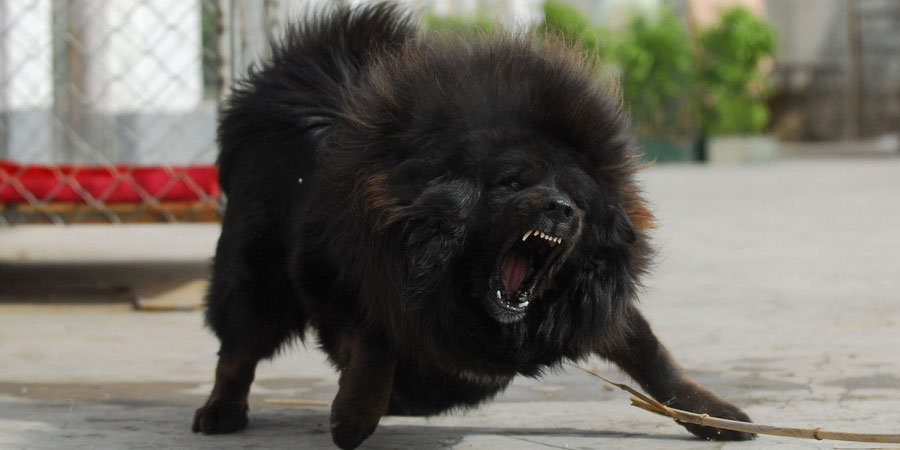

Dok-Khyi, Tsang-khyi
Overview
A powerful, heavy, but athletic dog, the Tibetan Mastiff is built to combine strength and agility. Its body is slightly longer than tall. Its walk is slow and deliberate, while its trot is powerful and light-footed. The whole appearance is impressive, with a solemn but kindly expression. The coat, which is noticeably heavier in males than in females, is thick and fairly long, especially around the neck and shoulders. The tail is densely coated and the hind legs well feathered on the upper parts. The hair is coarse, straight and hard, standing off from the body. It carries a heavy undercoat in cold weather, but little undercoat in warm weather. This combination of coat types allows the Tibetan Mastiff to endure the extremes of Tibetan weather.
As befitting their long past as a solitary sentry and protector, Tibetan Mastiffs are independent, strong willed, and territorial. They are aloof toward strangers but devoted to their family. Proper socialization is essential so that they will accept strangers and not become overly suspicious. They are gentle and patient with their children, but may guard their home against visiting children who may appear to be threatening the family children. They are generally good with other dogs and are rarely dog aggressive. (In Tibet, they were often kept with Lhasa Apsos.) Most Tibetan Mastiffs are good with other animals.
| Size | Large |
| Height | 25-28 inches (61-71 cm) |
| Weight | 140-170 pounds (64-78 kg) |
| Lifespan | 10-14 years |
| Colors | Black Black & Tan Blue Brown Gray Red |
| Origin | China |
| Classification | Purebred |
| Good Lapcat |
| Good In Apartments |
The Tibetan Mastiff can live in an apartment life if it is very well exercised. These dogs are not very active indoors. |
| Good With Children |
Good with Kids: This is a suitable breed for kids and is known to be playful, energetic, and affectionate around them. |
| Good With Dogs |
|
| Good With Cats |
|
| Exercise Needs |
The Tibetan Mastiff has an average need for exercise, but tends to grow destructive if cooped up indoors all day. For this reason, Tibetan Mastiff ownership is discouraged for small apartments. Tibetan Mastiffs enjoy going to the countryside, but are not interested in playing fetch or games with a ball. The Tibetan Mastiff should not be over exercised when young as it needs all its energy to grow strong bones and put on weight. Tibetan Mastiffs are not well suited to hot weather. |
| Trainability |
Moderately Easy Training: The Tibetan Mastiff must be trained in an atmosphere of mutual respect, as it will ignore a handler who uses strong words and shows a willingness to strike. Obedience classes when young are highly recommended. |
| Affectionate |
|
| Playfulness |
|
| Grooming Requirements |
Moderate Maintenance: Grooming should be performed regularly to keep its fur in good shape. No trimming or stripping needed. |
| Shedding |
Moderate and Seasonal Shedding: Expect this dog to shed regularly. Be prepared to vacuum often. Brushing will reduce shedding as well as make the coat softer and cleaner. |
| Vocalization/Barking |
Frequent |